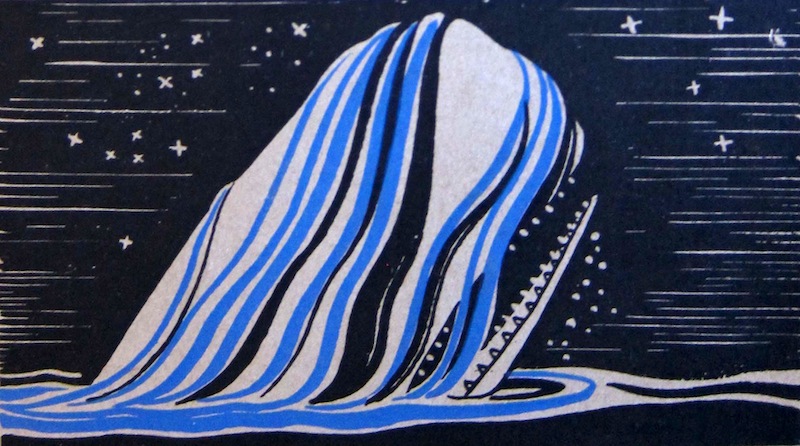What do we want when we write fiction? We want to explode heads, to break hearts, to wring tears and terror from our readers. We want to make magic.
I co-created, co-write and draw Concrete Park, the graphic novel series from Dark Horse Comics (with Erika Alexander). It’s an epic set on a distant, desert planet where young human exiles, Earth’s unwanted poor, must build a new world or perish. We set out to make sci-fi that was gritty and real.
Then the magic in our story snuck up on us.
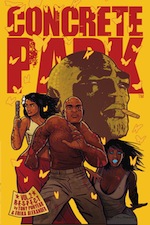 Concrete Park has a strong multicultural flavor and a sexy beat. Many of our characters come from places with strong supernatural traditions. From the margins, ghosts demanded to be heard; tricksters and time-benders, shape-shifters and shamans slunk onto the pages, pulling us in magical directions. Concrete Park took shape in the tradition of Magical Realism, a genre where dreamlike and fantastical elements are treated as part of the fabric of everyday life. Magical Realism trades in the subjectivity of experienced reality; it understands that each of us dreams a reality of his or her own. This paradox is even reflected in the oxymoron of our title. The five books below were touchstones for our series.
Concrete Park has a strong multicultural flavor and a sexy beat. Many of our characters come from places with strong supernatural traditions. From the margins, ghosts demanded to be heard; tricksters and time-benders, shape-shifters and shamans slunk onto the pages, pulling us in magical directions. Concrete Park took shape in the tradition of Magical Realism, a genre where dreamlike and fantastical elements are treated as part of the fabric of everyday life. Magical Realism trades in the subjectivity of experienced reality; it understands that each of us dreams a reality of his or her own. This paradox is even reflected in the oxymoron of our title. The five books below were touchstones for our series.
Beloved by Toni Morrison
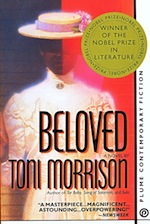 This is a magical monster of a book, made all the more so by its accessible prose (though that prose seethes into poetry) and its simple story (though that story, like slavery, which is its frame, is surreal). This is a startling, flattening literary performance of the highest art, yet one a sixth-grader could read and love. And be terrified by.
This is a magical monster of a book, made all the more so by its accessible prose (though that prose seethes into poetry) and its simple story (though that story, like slavery, which is its frame, is surreal). This is a startling, flattening literary performance of the highest art, yet one a sixth-grader could read and love. And be terrified by.
In 1873, former fugitive slave Sethe lives haunted in the “spiteful, full of baby’s venom” house at 124 Bluestone Road in Cincinnati. She tries to beat back the past, the past of slavery, of running from slavery and of murdering her own infant daughter rather than see her re-captured by slavers, but the past has other ideas.
A young woman appears one day, naked and wet as a newborn. “Beloved,” the walking embodiment of that dark past, is by turns malevolent, demanding, parasitic, beautiful, sexual, and ultimately nihilistic and destructive. She is a character raging to be remembered, and you’ll never forget her.
Morrison wants to recover lost black voices, to place their haunting absence at the very center of the American Story. Much of classic American literature posits that story as a series of hero journeys, lightings-out for the territories. Toni Morrison says no, baby, it’s a ghost story, and until our ghosts are confronted, claimed, loved, heard and exorcised, the haunting will go on.
One Hundred Years of Solitude by Gabriel García Márquez
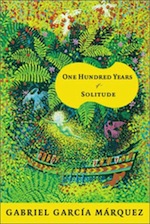 This was the world-successful novel that put “Magical Realism” on the map. Garcia Marquez’s fable-drenched rise and fall of a fictional village, Macondo, proves that “magical” and “realism” are not opposite or contradictory modes of storytelling, but, rather, just two tools in a gifted writer’s kit. By the book’s end, you cannot imagine telling a tale this true to its Latin American setting in any other way.
This was the world-successful novel that put “Magical Realism” on the map. Garcia Marquez’s fable-drenched rise and fall of a fictional village, Macondo, proves that “magical” and “realism” are not opposite or contradictory modes of storytelling, but, rather, just two tools in a gifted writer’s kit. By the book’s end, you cannot imagine telling a tale this true to its Latin American setting in any other way.
This is a book of magical circles, of repetitions and foldings-over in time. There is a biblical rhythm that sees Macondo rise from the jungle with its Adam-and-Eve family, the Buendias, and their search for knowledge. Development comes, technology comes, ghosts come and come again, golden fishes proliferate, the railroad comes, followed by a banana plantation, a massacre of banana workers, and a cleansing, biblical flood. This book is lyrical, sensuous, a dream of fiction.
Blood Meridian by Cormac McCarthy
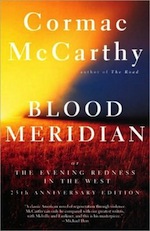 If One Hundred Years of Solitude is a dream, Blood Meridian is a dark, smoking nightmare of violence and savagery, rendered in swooping coils of Faulkner-on-acid prose. Set in the 1840s West, the novel follows a character known only as “The Kid” as he falls in with a ruthless band of scalp hunters, men who will take Apache scalps for a $300 bounty, or yours if cooperative Apaches fail to appear. The sanguinary zenith of the title conjures up one of the great magical characters of the 20th Century, “The Judge”. The waking night-terror of the carnage he presides over (some of the roughest stuff ever put on paper) is matched only by its matter-of-fact presentation.
If One Hundred Years of Solitude is a dream, Blood Meridian is a dark, smoking nightmare of violence and savagery, rendered in swooping coils of Faulkner-on-acid prose. Set in the 1840s West, the novel follows a character known only as “The Kid” as he falls in with a ruthless band of scalp hunters, men who will take Apache scalps for a $300 bounty, or yours if cooperative Apaches fail to appear. The sanguinary zenith of the title conjures up one of the great magical characters of the 20th Century, “The Judge”. The waking night-terror of the carnage he presides over (some of the roughest stuff ever put on paper) is matched only by its matter-of-fact presentation.
Moby Dick by Herman Melville
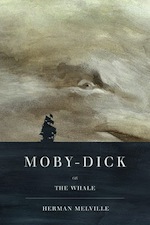 This book was written nearly one hundred years before the term “Magical Realism” was coined, but I say it belongs among these strange masterpieces. From the outrageous moving mountain of the title, to the hate-blasted hero, Ahab, to the literal, everyone-believes-it presence of prophecy and magic, (Queequeg dies of it, yo), Moby Dick was MR before MR was cool. Ahab knows he’s in a mummer’s show, equal parts Macbeth and Old Testament. His monomaniacal desire to “strike through the mask,” his quest to be revenged upon the White Whale, is set amid the most quotidian and granular descriptions of life at sea ever written. This realistic frame and this crazy, pipe-dream center make Moby Dick a towering progenitor of this new-discovered genre.
This book was written nearly one hundred years before the term “Magical Realism” was coined, but I say it belongs among these strange masterpieces. From the outrageous moving mountain of the title, to the hate-blasted hero, Ahab, to the literal, everyone-believes-it presence of prophecy and magic, (Queequeg dies of it, yo), Moby Dick was MR before MR was cool. Ahab knows he’s in a mummer’s show, equal parts Macbeth and Old Testament. His monomaniacal desire to “strike through the mask,” his quest to be revenged upon the White Whale, is set amid the most quotidian and granular descriptions of life at sea ever written. This realistic frame and this crazy, pipe-dream center make Moby Dick a towering progenitor of this new-discovered genre.
The Illustrated Man by Ray Bradbury
 This book blew my mind when I was young. It’s a collection of 18 short stories, published in 1951. The stories are tied by the framing device of “the Illustrated Man,” a man whose body is covered in moving, story-telling tattoos. Moving, story-telling tattoos? Yup, and this outlandish conceit is presented flatly, the better to focus on the content of the stories. Thing is, as nice as the stories are, and some of them are real sweethearts, many of them are standard ’50s sci-fi what-ifs: What if racial segregation was inverted in the human colony on Mars? It was the framing device that really captured my imagination, the sadness of the man condemned, Cassandra-like, to tell the future with his prophetic, living ink.
This book blew my mind when I was young. It’s a collection of 18 short stories, published in 1951. The stories are tied by the framing device of “the Illustrated Man,” a man whose body is covered in moving, story-telling tattoos. Moving, story-telling tattoos? Yup, and this outlandish conceit is presented flatly, the better to focus on the content of the stories. Thing is, as nice as the stories are, and some of them are real sweethearts, many of them are standard ’50s sci-fi what-ifs: What if racial segregation was inverted in the human colony on Mars? It was the framing device that really captured my imagination, the sadness of the man condemned, Cassandra-like, to tell the future with his prophetic, living ink.
Tony Puryear is a screenwriter (Eraser, Fahrenheit 451) and director who creates worlds for film, television, graphic novels and multimedia. He co-writes and illustrates the graphic novel series Concrete Park with Erika Alexander, published by Dark Horse Comics. Vol.2: R-E-S-P-E-C-T is on sale May 6 in the comic shops, and May 12 in the book market.










